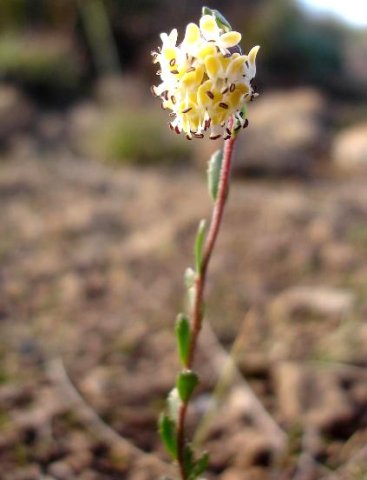Glumicalyx montanus

Author: Ivan Lätti
Photographer: Judd Kirkel Welwitch
Glumicalyx montanus, sometimes called Lesotho drumsticks, is a small tufted perennial, woody at its base and growing erect stems from its woody rootstock, a suffrutex, reaching heights around 35 cm. The upper stems have whitish hairs pointing downwards, the lower stems brown. This is the type species of the Glumicalyx genus. It was for long the only member of the genus while the others mostly started off classified in Zaluzianskya.
The flowers are produced in dense, rounded, head-like spikes at stem tips. The five petal lobes of each flower are obovate with rounded tips. They are creamy yellow here, but may also be slightly greenish. The anthers are dark in this species, all four well exserted. Flowering happens in early summer to after midsummer.
The species distribution is widespread in South African provinces of KwaZulu-Natal, the Eastern Cape and the Free State, always close to the Lesotho border in the Drakensberg area. The plant is common in Lesotho.
The habitat is montane grassland on basalt rock and boulder beds. The habitat population is deemed of least concern early in the twenty first century (Springer, 2019: The role of pollinators as ecological drivers of diversification in the Drakensberg Mountain Centre endemic genus Glumicalyx (Scrophulariaceae, Limoselleae), University of the Witwatersrand; Trauseld, 1969; JSTOR; http://redlist.sanbi.org).

